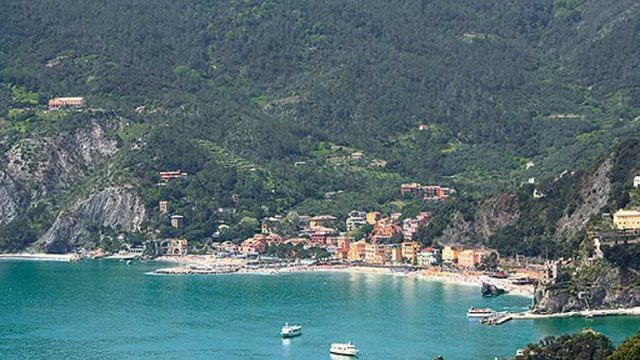They were elderly, this soft-spoken couple, standing in a sunny corner of the Pisa Centrale railway station, where we had just reached from Florence. How convenient that our connection was to arrive on the same binari (platform) and, oh, wasn’t it a lovely day to head for Cinque Terre? Cheen-kwe Tayr-ray, he said, his bony fingers rolling with his ‘r’s, his elegance almost careless. Italians, I thought, use orchestral hand movements to match the musical cadence of their language. Our train, we were told by a ticket examiner, had been cancelled. Instead of waiting for a train that would accept our low-cost regional ticket, we boarded another one — € 65 lighter after buying a fresh ticket — and were soon speeding towards Cinque Terre, or ‘five lands’. We went for a long day trip to this quintet of tiny, higgledy-piggeldy villages in northwestern Italy’s scenic Liguria, but then wished we had stayed a day or two. Villagers rent out rooms (camere). Look for signs that say affittacamere (rooms for rent).
The villages are Riomaggiore, Manarola, Corniglia, Vernazza and Monterosso al Mare. They are a part of the Parco Nazionale delle Cinque Terre, a Unesco World Heritage site since 1997. This status has kept all vehicular traffic out, so access is only by train. Electric buses ply within the villages, useful for tourists trying to haul luggage over super-steep streets. Everybody walks.
The national park status has also shifted the focus from commercial tourism to sustainable living. Restaurants pitch local produce, especially white wines, sweet lemons and freshly caught fish, adding to the region’s reputation of being laidback and non-snooty.
The setting is devastatingly beautiful. The five villages sprawl at impossible inclines on jagged cliffs. Brightly painted houses sprinkle down to the sparkling sea, except in Corniglia, which stubbornly stays atop a vertiginous mountain, its railway station a knee-breaking climb up 400 old steps (someone said 365, one for each day of the year). Surrounding the villages are olive groves and vineyards, the paths between them worn out by farmers who have walked this serrated terrain for centuries.
We picked the popular walking trail No. 2, from Vernazza to Monterosso, a coastal hike listed as moderately difficult and ‘about two hours’. We took nearly twice that much time, admiring the Mediterranean. Panting over some single-file ascents, we flattened ourselves against the rock face to share notes with other families (also puffing), some with young kids, others with dogs, the elders with walking sticks the most gung-ho among us. “Go on,” they cheered. “At least you are still young!”
This isn’t an easy, one-hop destination from anywhere. It is connected by train to Florence, and Milan is about three hours by train from Levanto, one of the two mainline stations closest to Cinque Terre; the other is La Spezia. It takes a while to meet this quintet, but when you do, you’ll be dizzy with delight.




